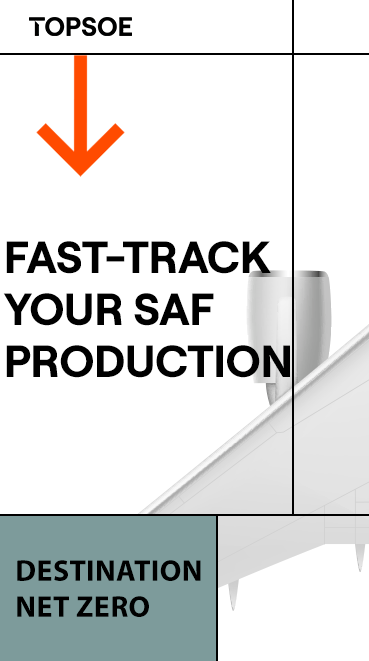New study shows only targeted subsidy for eFuels coupled with GHG levy would ensure eFuel early adoption
- UMAS
- Feb 3
- 4 min read

A new report from UCL Energy Institute Shipping and Oceans Research Group and UMAS reveals significant risk in some of the options the International Maritime Organization is considering for enabling shipping’s energy transition.
The analysis comes at a crucial time as the IMO prepares for key negotiations in February and April to finalize the mid-term measures for reducing greenhouse-gas (GHG) emissions.
The study finds that a fuel standard—the Global Fuel Standard—in combination with a flexibility mechanism, even with a multiplier that boosts the credit given to eFuels, is unlikely to start an eFuel transition before 2040.
Only policies with targeted incentives for eFuels, such as a subsidy/reward that can be derived from the revenues generated by a GHG price or levy, can effectively bridge the gap between eFuels and low-cost early compliance options such as LNG, biofuels, carbon capture and storage (CCS) to promote shipping’s energy transition in the critical 2027-’35 period.
Without such measures, the industry risks becoming locked into alternatives that could make long-term decarbonization goals more difficult and expensive to achieve.
This finding is consistent with work done last year by DNV for the IMO in its comprehensive impact assessment, which identified the lowest-cost energy transition occurred in the scenario with a combination of a GFS and a high universal GHG price (levy).
Analysis shows that GHG pricing starting at $150 per metric ton of CO2e could generate sufficient revenue to support both the energy transition and ensure a just and equitable transition for affected communities.
GHG pricing starting at $30 per ton of CO2e look unlikely to provide certainty of support to enable the energy transition to start and scale through the 2027-’35 period, and certainly would be unable to additionally support a just and equitable transition, according to the new study.
“The IMO’s fuel standard is critical for the longer-term certainty of demand and longer-run investment,” said Tristan Smith, professor of energy and transport at the UCL Energy Institute. “But under this policy alone, this new analysis shows that the market will struggle to make an eFuel business case before 2040, and therefore eFuels such as green ammonia will not be available for shipping’s use in any volume. Some suggest that the role of a GHG levy is only for addressing equity. This study shows that it is not the only role—it is also a critical enabler of shipping’s energy transition and for minimizing the long-run costs to trade.”
This study’s analysis directly relates to the viability and costliness of IMO’s revised strategy targets.
With such little time for an energy transition, unless the policy is able to immediately start the transition to eFuels, the sector can easily lock into a vicious cycle—lack of clear business case will undermine investment and prevent learning, cost reduction, supply-chain development and eFuels will remain scarce and expensive, depriving the sector of sight of its transition pathway.
Conversely a clear signal from the IMO’s mid-term measures can unlock long-run investment, stabilize returns and asset values, and unlock myriad cobenefits.
“[Total cost of ownership (TCO)] modeling is a powerful tool for assessing the implications of different policy scenarios on technology and fuel choice under a compliance regime at the ship level,” said Deniz Aymer, a senior consultant at UMAS. “It can assist in testing investment decisions and optimal fuel strategies in the face of huge uncertainty over the future price and availability of alternative fuels and the efficacy of technologies. From this study, several clear themes emerge. Scenario modeling is highly sensitive to input assumptions—particularly future spreads in the abatement costs of alternative fuels. However, the required stringency of the Global Fuel Standard implies that whatever mid-term measures are introduced, the early low-cost routes to compliance could become uncompetitive within a decade. The analysis also makes clear that while a GFS will oblige incremental decarbonization towards the IMO’s net-zero goals, early action taken in parallel to support eFuels is needed to ensure that the latter half of shipping’s energy transition is less painful.”
Using the TCO approach, this study models a 14,000 20-foot equivalent unit (TEU) container vessel with different technology and fuel options to evaluate the effects of policy combinations—including a GHG fuel intensity (GFI) requirement, flexibility mechanism, and a levy and subsidy/reward mechanism—currently under discussion at the IMO.
It builds on previous modeling by DNV for the IMO’s comprehensive impact assessment but incorporates more conservative estimates for bioenergy costs and CCS capture rate.
The TCO analysis illustrates how fuel prices and technology cost and performance determine optimal outcomes in response to different policy scenarios and how adjustments to those assumptions can drive materially different outputs to the results presented in the IMO’s comprehensive impact analysis.
Changes to the most competitive technology and fuel combinations can then fundamentally shift the expected energy mix.
Adjusting the biofuel costs and CCS capture rate in line with recent studies produces significantly different outcomes in all scenarios relative to those derived by DNV, shortening and reducing the viability of these two options (albeit with them still providing compliance at competitive costs early in the transition).
Ammonia (blue and then eAmmonia) becomes the most cost-effective fuel/technology choice from the mid-2030s.
Across the wider range of fuel types, eFuels have the least cost of compliance through the 2040s (i.e., they are the key for minimizing the long-run cost of operation).
To read the full report, click here.






















-RKstandin.jpg)
_gif.gif)




